FUNDING CUTS IMPACT CT HUMANITIES: Help CT Humanities navigate recent funding cuts and continue our vital work across Connecticut. All donations made to CTH will be matched dollar-for-dollar up to $50,000. Donate today!
News & Updates

Armstrong Finds a Niche in the Tire Market
Armstrong tires, one of the most popular brands of automobile and farm equipment tires in the 20th century, has its roots in West Haven, Connecticut.
Read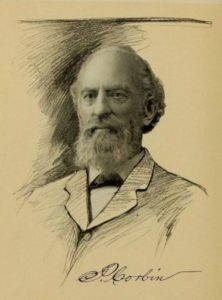
Philip Corbin: Manufacturing A Legacy for New Britain
The P&F Corbin Company manufactured builders’ hardware, including hooks, sash fasteners, picture nails, locks, and knobs, and coffin trimmings.
Read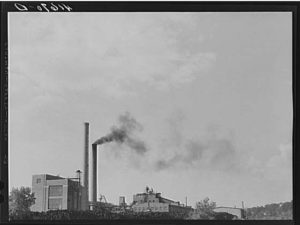
Naugatuck’s Early Chemical Industry
One of the attributes that made Naugatuck unique was that it was the home of Charles Goodyear, the inventor of vulcanized rubber.
Read
Warren Congregational Church, a Longstanding Community Center
An examination of the Warren Congregational Church not only tells us about the central role churches played in developing communities during this period in New England’s history.
Read
The League of American Wheelmen and Hartford’s Albert Pope Champion the Good Roads Movement
How the 19th-century cycling craze led to improved roads and paved the way for future federal highway construction.
Read
Southington Industry: From Nuts to Bolts
Buried in Southington’s past are the foundations of the bolt industry that helped build a nation from the ground up.
Read
Norwich in Perspective
Two different artistic takes on a prosperous 19th-century mill town and commercial center.
Read
The Answer Is Risom!
How the Scandinavian design movement re-fashioned local industry in the mill town of Thompson during the 1960s and ’70s.
Read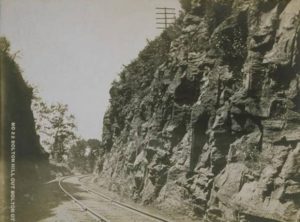
Rock-Solid Industry in 19th-Century Bolton
Driving along Route 44 in Bolton, motorists travel through a narrow passageway of rocks, caves, and woods known as the Bolton Notch.
Read
Stepping Back in Time: North Stonington Village Historic District
Listed on the National Register of Historic Places in 1983, the Stonington Village Historic District features buildings, canals, bridges, and machinery that recall life in a typical early 19th-century New England mill village.
Read
Bird’s-eye Views of Rockville Chart Textile Industry’s Growth
Two depictions, produced 18 years apart, illustrate how the textile boom transformed this borough of Vernon.
Read
A Sign of the Times Blends Masonic and Patriotic Imagery
The sign from a tavern operated by Luther Holcomb, a Granby mason, reflects his fraternal affiliation as well as the establishment’s role as a meeting site.
Read
Connecticut Takes the Wheel on Education Reform: Project Concern
As one of the earliest voluntary busing programs in the US, Project Concern sought to address educational inequalities.
Read
Looking Back: How the Vote Was Won
Today it is the Katharine Hepburn Cultural Arts Center (The Kate) but it began as the Old Saybrook Musical and Dramatic Club.
Read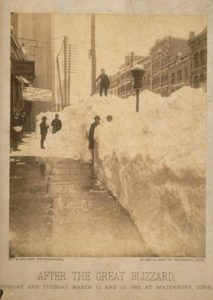
The Blizzard of 1888 – Today in History: March 11
On Sunday, March 11, 1888, a blizzard came unexpectedly to the northeastern United States.
Read
The Rise of the “Second Home” Community in Sharon – Who Knew?
Sharon attracted a substantial vacation community and between 1880 and 1920, wealthy visitors refurbished older homes or built Colonial Revival-style mansions.
Read
Map – Rochambeau’s Camp at Danbury
This map, “Camp a Danbury le 23 Octobre 11 milles de Salem,” is a page from the manuscript atlas Amérique Campagne 1782.
Read
Map – Rochambeau’s Camp at East Hartford
This map, “Camp à East Hartford, le 29 Octobre, 12 milles 1/2 de Farmingtown,” is a page from the manuscript atlas Amérique Campagne 1782.
Read
Map – Rochambeau’s Camp at Voluntown
This map, “Camp à Walen-Town, le 8 Novembre, 10 milles de Contorbery,” is a page from the manuscript atlas Amérique Campagne 1782.
Read
Map – Rochambeau’s Camp at Farmington
This map, “Camp à Farmington le 28 Octobre, 13 milles de Barn’s Tavern,” is a page from the manuscript atlas Amérique Campagne 1782.
Read
Map – Rochambeau’s Camp at Windham
The manuscript outlines the plans of the camps for Comte de Rochambeau’s army during their return march north from Williamsburg, Virginia, to Boston.
Read
Bird’s-eye Views of Winsted
As bird’s-eye view maps declined in popularity during the early 20th century, artists incorporated technical advances in hopes of reversing the trend.
Read
North Stonington’s Randall House, Nothing Ordinary about It
Fascinated by the colonial lifestyle and open-hearth cooking, Bill and Cindy purchased the John Randall House in North Stonington in 1986.
Read
North Stonington: Shunock River and Local Ambitions Powered a 19th-century Mill Town
With water supplied by the Shunock River and Assekonk Brook, North Stonington supported mill operations and local businesses from the late 1600s to early 1900s.
Read
Dr. Martin Luther King Jr’s Time in Connecticut
In the summer of 1944, a young Martin Luther King Jr. worked at the Simsbury tobacco farm of Cullman Brothers, Inc.
Read
A Bird’s-eye View of East Haddam
In 1880, East Haddam was already a popular tourist destination and, despite its small size, boasted two steamboat landings to accommodate visitors.
Read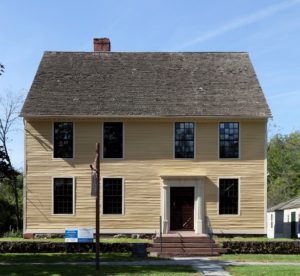
Site Lines: Silas Deane
Despite Deane’s role in securing French supplies and support for the American Revolution, his accomplishments have long been obscured by whispers of treason, a spy’s double-dealing, and his own sudden death.
Read
Causes of the Pequot War
The outbreak of the Pequot War is best understood through an examination of the cultural, political, and economic changes after the arrival of the Dutch (1611) and English (early 1630s).
Read
Connecticut’s Oldest English Settlement
The original Windsor settlement contained not only the town of Windsor but also what eventually became the towns of Enfield, Suffield, Simsbury, and others.
Read
Luna Park – Who Knew?
Luna Park in West Hartford was a popular attraction at the turn of the 20th century but was demolished in the 1930s to make way for a factory.
Read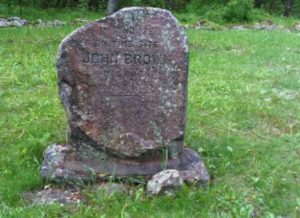
The Fight Over Slavery Reaches Torrington
In the years prior to the Civil War, Torrington, like many towns in New England and the rest of the country, found itself divided by the issue of slavery.
Read
Prudence Crandall Fights for Equal Access to Education
A headmistress champions education for African American women and although forced to close her school in 1834, she helped win the battle for generations that followed.
Read
Labor Day at the Turn of the 20th Century
In February of 1889, the Connecticut General Assembly passed a bill making the first Monday of each September a legal holiday.
Read
Artist Roger Tory Peterson, a Champion for the Natural World
Artist, author, and influential conservationist Roger Tory Peterson pioneered the modern age of bird watching with his 1934 book, A Field Guide to the Birds.
Read
Joshua Hempsted Born – Today in History: September 1
On September 1, 1678, Joshua Hempsted was born in New London, Connecticut.
Read
Salisbury Iron Forged Early Industry
Connecticut’s bucolic northwest corner, with its Taconic Range, Berkshire Hills, and pastoral valleys, harbored a major iron industry in the 18th and 19th centuries.
Read
Homer D. Babbidge, Leader in Education
Homer Daniels Babbidge, Jr., made his mark as president of the University of Connecticut from 1962 through 1972 and transformed the once-quiet university into a national leader in higher education.
Read
Preserving an All-American Downtown in Torrington
Torrington’s unique and historically significant buildings are the foundation on which local businesses and civic leaders built a revitalized economy.
Read
Fitch Soldiers’ Home Closes – Today in History: August 28
On August 28, 1940, Fitch’s Home for Soldiers and their Orphans, also known as Fitch’s Home for Soldiers, in Darien, closed its doors.
Read
Windsor Engineers Success
In recognition of the importance of the canal and the village in fostering local economic development, the area was given the name Windsor Locks in 1854.
Read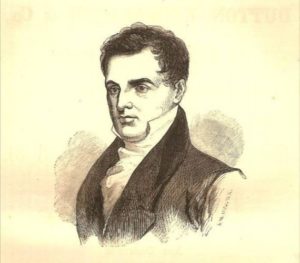
Medical Pioneer Eli Todd born – Today in History: July 22
On July 22, 1769, Eli Todd was born in New Haven and in 1824 became the first director of the Connecticut Retreat for the Insane in Hartford.
Read
The Art of Life and Death in Colonial Bolton
Bartlett was the first gravestone carver in the upper Connecticut River Valley, and his headstones tell historians much about early life in the northeastern colonies.
Read
Amasa Goodyear and Son Re-Invent Naugatuck
Born in New Haven, Amasa Goodyear was an inventor, manufacturer, merchant, and farmer.
Read
Mystic River Bridge Opens – Today in History: July 19
On July 19, 1922, the Mystic River Bridge spanning the Mystic River in Groton opened to the public.
Read
Branford Gets On the Trolley
Starting as a means of intra-city transportation, trolley lines extended outward by the start of the 20th century and promoted the growth of modern suburbs.
Read
The Automatic Gallows – Today in History: June 18
On June 18, 1895, Jabez L. Woodbridge of Wethersfield patented an automated gallows.
Read
American Painter John Trumbull Born – Today in History: June 6
On June 6, 1756, John Trumbull, painter, architect, and author, was born in Lebanon.
Read
Connecticut’s First Female Telephone Operator – Today in History: March 24
On March 24, 1879, Marjorie Gray became Connecticut’s first female telephone operator.
ReadMore Articles




